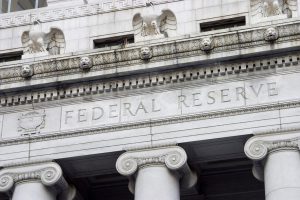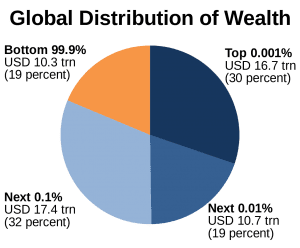
What is Financial Instability: The Struggle to Flourish and Succeed
April 23, 2024
Introduction
For years, conventional wisdom has held that financial stability is the cornerstone of a content and secure existence. Yet, an emerging perspective suggests that financial instability might be inevitable and beneficial in unexpected ways. This article delves into the hidden advantages of economic instability and proposes reevaluating our traditional views on personal finance.
In an increasingly globalized and interconnected world, financial instability has become more prevalent than ever before. Economic crises, market fluctuations, and job insecurity have become common challenges individuals must navigate. While these experiences can be daunting and stressful, they also present unique opportunities for growth, resilience, and innovation.
Throughout history, periods of financial instability have often served as catalysts for change, forcing individuals and societies to adapt and evolve. From the ancient Greek philosopher Aristotle to modern-day investors like Warren Buffett, great minds have recognized the potential for adversity to breed strength and success.
The Hidden Benefits of Financial Instability
Encouraging Risk-Taking
One of the most significant benefits of financial instability is its ability to foster risk-taking. In a stable economic environment, one tends to maintain the status quo, avoiding risks that could jeopardize one’s security. However, instability can catalyze innovation and creativity. This environment compels individuals to think outside the box and devise novel solutions, potentially leading to more long-term success and fulfilment.
Building Resilience
Financial instability can also be a potent tool for building resilience. Experiencing financial ups and downs teaches resourcefulness and adaptability—invaluable qualities in managing money and all aspects of life. As Seneca once said, “Fire tests gold, suffering tests brave men.” The challenges posed by financial instability test and strengthen an individual’s character, preparing them for future obstacles.
Fostering a Growth Mindset
Moreover, instability can encourage a growth mindset. Instead of being disheartened by financial setbacks, those who face them are often propelled to learn and improve, driven by the necessity to adapt. This mindset aligns with Nietzsche’s philosophy: “What does not kill me makes me stronger.” Embracing challenges as opportunities for growth can lead to profound personal and financial development.
Promoting Diversification
Finally, financial instability encourages diversification. When financial security is not guaranteed, putting all one’s economic eggs in one basket becomes less appealing. Diversification not only spreads risk but also opens up multiple avenues for income and growth, which can lead to a more robust financial portfolio.
The Interplay of Mass Psychology and Financial Instability: A Catalyst for Action
Mass psychology has played a significant role in shaping financial markets throughout history. The lemming effect, where individuals collectively follow a trend without independent analysis, can lead to disastrous financial decisions and market bubbles. This phenomenon is not new; it can be traced back to ancient times. In the 4th century BC, the Greek philosopher Aristotle observed that “men nearly always follow the tracks made by others and proceed in their affairs by imitation.”
The Dutch Tulip Mania of the 1630s is a classic example of the lemming effect in action. During this period, tulip bulbs became highly sought-after, with prices skyrocketing. People from all walks of life invested in tulips, believing prices would continue to rise indefinitely. However, the bubble eventually burst, leaving many investors in financial ruin.
In more recent times, the dot-com bubble of the late 1990s and the housing bubble of the mid-2000s demonstrate how mass psychology can drive financial markets to unsustainable heights. In both cases, investors collectively bought into the hype, leading to overvalued assets and financial instability.
Contrarian thinking, which involves going against prevailing market sentiments, can often lead to better investment outcomes. As the American journalist H.L. Mencken suggested, challenging the majority can lead to unexplored opportunities: “The most dangerous man, to any government, is the man who can think things out for himself.” This idea is echoed by the legendary investor Warren Buffett, who famously advised, “Be fearful when others are greedy, and greedy when others are fearful.”
Financial instability, while often viewed as a negative phenomenon, can serve as a powerful catalyst for action. It forces individuals to reevaluate their financial strategies and goals, prompting them to take a more active role in managing their financial well-being. Voltaire’s admonition to cultivate our garden encapsulates this idea, suggesting that we must actively manage and improve our financial resources rather than passively hoping for stability.
The renowned psychologist Abraham Maslow, best known for his hierarchy of needs theory, also emphasized the importance of taking action in the face of adversity. He argued that “in any given moment, we have two options: to step forward into growth or back into safety.” When faced with financial instability, individuals who choose to step forward and take action are more likely to weather the storm and emerge stronger.
By understanding the role of mass psychology in financial markets and embracing contrarian thinking, individuals can make more informed decisions and avoid falling victim to the lemming effect. Moreover, they can build resilience and adaptability in economic uncertainty by viewing financial instability as a catalyst for action and actively managing their financial resources.
Real-World Examples and Solutions
Throughout history, periods of financial instability have often catalyzed significant economic reforms and innovations. During the Great Depression, which lasted from 1929 to 1939, the United States experienced a severe economic downturn, with the stock market losing 89% of its value and unemployment rates reaching 25%. In response, the government implemented a series of reforms, including creating the Securities and Exchange Commission (SEC) to regulate the stock market and the Federal Deposit Insurance Corporation (FDIC) to protect bank deposits.
Similarly, the global financial crisis of 2007-2008, triggered by the subprime mortgage crisis, led to a worldwide recession. Governments and central banks responded with unprecedented measures, such as bailouts, quantitative easing, and stricter financial regulations. The Dodd-Frank Wall Street Reform and Consumer Protection Act of 2010 introduced sweeping changes to the U.S. financial system, aiming to prevent future crises and protect consumers.
These periods of instability have also driven innovations in financial instruments and corporate strategies. For example, the development of credit default swaps (CDS) and collateralized debt obligations (CDOs) in the 1990s and early 2000s, while contributing to the 2007-2008 crisis, also demonstrated the potential for financial innovation. In the wake of the crisis, many companies adapted their strategies, focusing on cost-cutting, risk management, and diversification to weather future economic storms.
To effectively navigate financial instability, individuals and investors should consider the following strategies:
1. Stay Informed: Monitoring financial news, market trends, and economic indicators can help investors anticipate changes and adapt accordingly. By staying informed, investors can make more timely and informed decisions about their portfolios.
2. Maintain Liquidity: Access to liquid assets, such as cash or readily convertible investments, can provide a crucial buffer against financial shocks. Financial experts recommend keeping an emergency fund covering 3-6 months of expenses to help weather unexpected financial challenges.
3. Invest in Self-Improvement: Enhancing one’s skills and knowledge can open up new opportunities in a volatile job market. Acquiring new skills, staying updated with industry trends, and networking can make individuals more adaptable and valuable to potential employers.
4. Embrace Flexibility: Being open to changing strategies and exploring new opportunities is essential in a fluctuating economic landscape. Diversifying investments across different asset classes, sectors, and geographic regions can help mitigate risk and capitalize on emerging trends.
By learning from historical examples and implementing these strategies, individuals and investors can better position themselves to navigate the challenges and opportunities of financial instability.
The Downsides of Financial Stability for Investing
Financial stability may not always be ideal for investing due to several factors. Low-interest rates, a common feature of stable economic environments, can reduce investment returns. The Federal Reserve’s efforts to stimulate borrowing and spending through low rates can negatively impact savers and investors.
Moreover, financial stability can breed market complacency, causing investors to become overly comfortable and neglect potential risks. This can result in poorly thought-out investment decisions and economic losses.
Stable financial periods may also limit growth opportunities and increase stock market profits. Businesses may lack the motivation to make significant changes or investments that could drive future growth, thereby limiting potential profits for investors.
While financial stability may appear desirable, investors must consider these potential downsides. Staying informed, considering multiple perspectives, and maintaining a balanced approach to risk can help investors navigate stable financial environments and maximize their returns.
Conclusion
Rethinking the implications of **financial instability** may be long overdue. Rather than viewing it solely as a negative phenomenon, it is crucial to recognize its potential to stimulate growth, resilience, and success. As Seneca wisely stated, “Fire tests gold, suffering tests brave men,” suggesting that the challenges posed by financial instability can serve to strengthen and refine our character and economic strategies.
Nietzsche’s philosophy that “What does not kill me, makes me stronger” further reinforces the idea that embracing the difficulties presented by financial instability can lead to profound personal and financial growth. By viewing these challenges as opportunities to learn, adapt, and improve, we can develop the resilience necessary to navigate the ever-changing economic landscape.
Moreover, Voltaire’s warning to cultivate our garden speaks to the importance of actively managing our financial well-being. Rather than passively hoping for stability, we must take responsibility for our financial futures by continually learning, growing, and seeking out new opportunities.
By integrating the wisdom of these great thinkers and applying contrarian strategies to our financial practices, we can transform the challenges posed by instability into opportunities for substantial personal and economic growth. Embracing financial instability as a catalyst for positive change can lead to a more resilient, adaptable, and ultimately successful approach to personal finance.
Other Articles of Interest

Negative Retained Earnings on the rise in the technology sector

Fed Tapering: To Party or not to Party?

Market Sentiment: Is Turning too bullish

Perception Management: Don’t fight the Trend

Margin Debt: Is it out of control?

Why Stock Market Cycles Indicate the Need for Caution

ABMD Stock Price Forecast for 2020 & Next Few Years

Why the Dollar and US Stock Market Could Rise Together

How To Add Images To PHPBB Forum

Stock market trend 2022: Analyzing Opportunities & Risks

Cannabis Market Growth: Unstoppable Trends & Opportunities

The Perils of Helicopter Money: Risks & Implications

401k Losing Money; 41 percent of Adults not saving for retirement
D.C. pension board ignites debate



